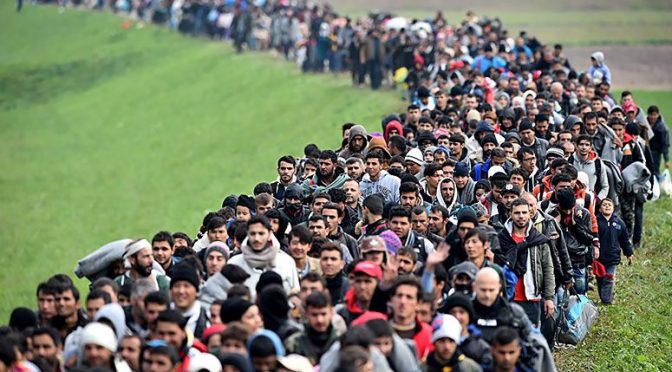Numbers, facts and fortcasts
– No one knows exactly how many refugees came to Germany so far. There could be ca. 1,2 million of them. Around one half of them (ca. 600.000) will stay in Germany. Around 70 % of them (420.000) are able to work.
– It would be beneficial if all data regarding refugees would be collected in one place, however, there is currently no such place in Berlin or elsewhere in Germany.
– Best chances to obtain asylum have Syrian, Eritreans and Iraqis.
– The process of granting asylum lasts 9 months (officially 5,2 months). The situation is worst for Afghans (15, 4 months), Iranians (18,0 months) and Somalians (18,3 months) although they mostly have good chances to actually get an asylum.
– Integration includes the following: 1) having a place for living, 2) learning the German language, 3) finding a job and 4) building bridges between cultures.
– 1,5 million homes across Germany are empty which technically means that finding accommodation for refugees shouldn’t be a problem. However, it seems that always some part of the puzzle is missing – for example, if they find place for living they cannot find job or vice versa: in cities where refugees could find work, there aren’t enough places for living etc. In addition to that, Germany should build at least another 350.000 homes annually in order to preserve social peace.
– Anyone who wishes to work in Germany needs to master the German language at least at the B1 level. However, there aren’t enough courses for refugees. Germany is short of 200 000 places in courses for refugees. Both teachers and rooms for teaching are missing. Teachers are not paid well which is why many teach voluntary. This is also why many refugees need to wait for a place in a language course. For how long? No one knows.
– Most of refugees who came to Germany have families in their home lands and need money immediately. They do not have time to spend one year in a language courses and then learn for a job for another three years. That is why there is an illegal job market in many cities across Germany.
– The Iraqi refugees have the worst gaps in education. More than one fourth of them has never attended school. One third of them (including those who have finished just 4 grades of school) do not posses any real education. The situation is better with Afghans and Syrians. Nevertheless, you need 5 to 6 years to educate a young Syrian so that he can work as a German who needed 3 years for the same job.
– Last but not least is the personal contact and bounding with native Germans: making friends, being a good neighbour, building bridges between different cultures. This is the most difficult part of integration and something that politics cannot manage directly.
– Special problem represent refugees who do not wish to have anything with the German society and men who think that German women are sluts. It should be explained to them that there are different rules for the interaction between men and women. Some courses have been arranged for this purpose too. However, the largest part of refugees is open to suggestions. We could say that about 3 % of them are ultrareligios with a problematic attitude towards women.
– Those who do not want to participate in integration could lose the state help and who are convicted of felony will face penalties and may be even banished from Germany. Only refugees who really which to become part of the German society will be allowed to stay.
– German state has still not formulated what exactly should be treated as a successful integration. By which parameters could it be “measured”? The government should determine
some concrete goals which would help communities to handle more organised.
– If refugee integration fails, it could cost Germany up to 398 billion Euro. Just for comparison: Germany’s annual federal budget is 316 billion Euro. If their integration succeeds, it could bring Germany an income of 20 billions Euro.
Source: Zeit magazine: “Wenn Mohammed Isa trifft, “April 28, 2016


